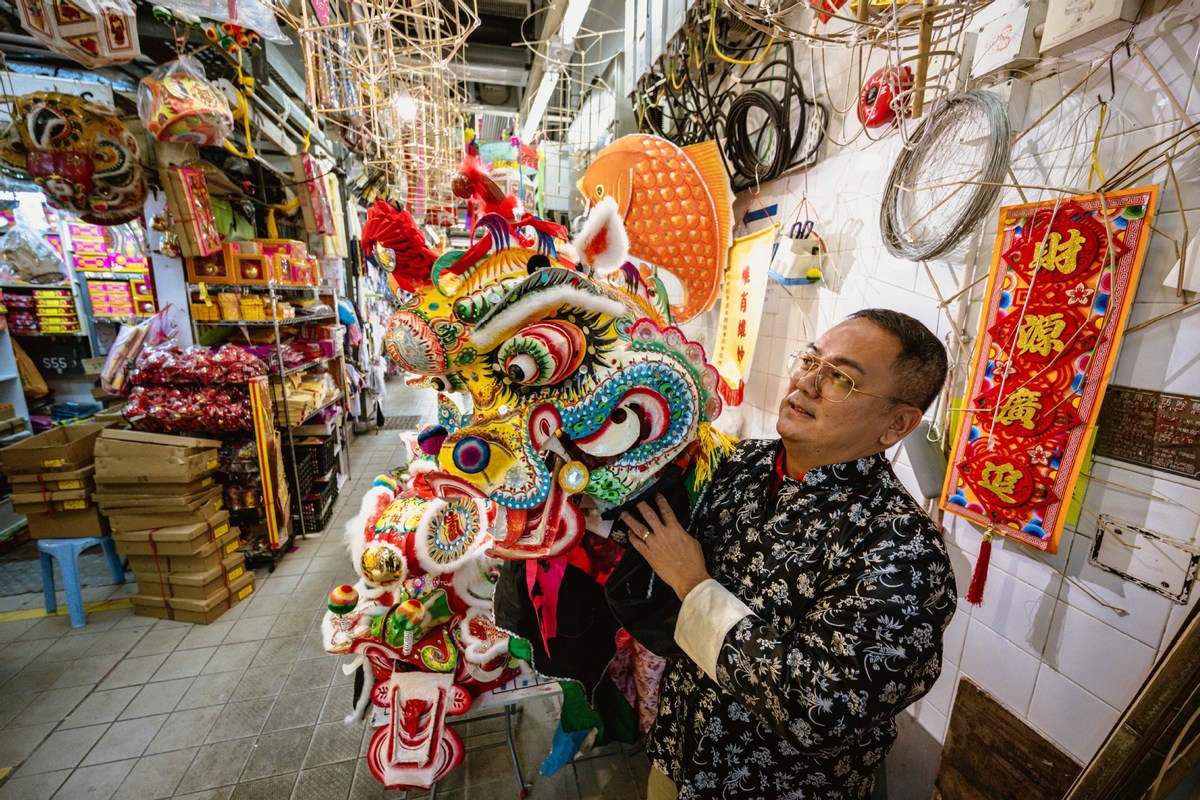

"Creating a Qilin head is a labor-intensive process, taking approximately 12 days," said Mou, adding that each component of the head is uniquely crafted to ensure balance and aesthetic appeal, reflecting the artistry and dedication required.
Mou underscored the importance of details. "The Qilin's forehead must be slightly raised, or it will appear droopy, losing its majestic presence. Each design tells a story, with color and pattern symbolizing different meanings," he said.
"Learning the Qilin dance, etiquette is more important than movement," Lau said, noting that Qilin is seen as a respectful creature, and this principle is central to the dance.
To Lau's relief, the tradition has been preserved as parents increasingly enroll their children in Qilin dance classes, believing it instills discipline. A youth troupe now flourishes, with participants eager to keep the tradition alive, and yet another female troupe has been formed, indicating the inclusivity of this cultural expression.
The tradition is now experiencing a renaissance. Nearly 1,000 individuals have participated in training sessions since 2019, thanks to outreach programs sponsored by the Hong Kong Special Administrative Region government.
As the Qilin dance continues through the village streets, it serves not only as an auspice of luck, but also as a testament to the enduring spirit of tradition and community.
Lau hopes that one day, the Qilin dance will grace international stages, introducing the richness of Chinese culture to the world.